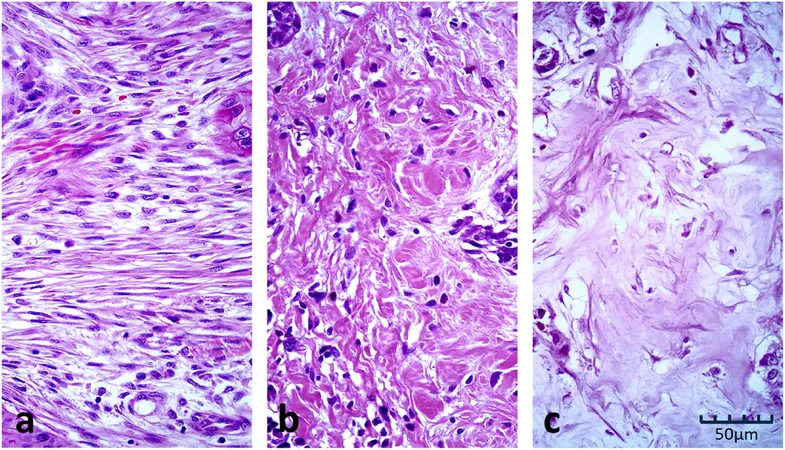
Breaking New Ground: The Key Role of Desmoplastic Reaction, Tumor Budding, and Tumor-Infiltrating Lymphocytes in Esophageal Cancer Prognosis
2025-07-01
Author: Nur
Revealing Insights from a Comprehensive Study on Esophageal Squamous Cell Carcinomas
In a groundbreaking retrospective study conducted at Akdeniz University Medical School in Antalya, Turkey, researchers dove deep into the prognostic factors influencing esophageal squamous cell carcinomas (ESCC). Analyzing data from 98 patients who underwent surgery between 2010 and 2019, the study aimed to uncover the critical roles of desmoplastic reaction (DR), tumor budding (TB), and tumor-infiltrating lymphocytes (TIL) in patient outcomes.
Harnessing Ethical Guidelines for Patient Research
Ethics were at the forefront of this study, with all procedures adhering to the highest ethical standards as outlined by the Helsinki Declaration. Patients provided informed consent to share their data, ensuring that the study respected individual rights while pursuing vital cancer research.
Decoding Histopathological Evaluations
The researchers meticulously evaluated the patients' histopathological slides, categorizing DR into three distinct groups based on stromal maturity. They employed rigorous criteria to assess TB and TIL, ensuring meaningful results that could correlate with patient prognosis. The meticulous nature of these evaluations set a strong foundation for what followed.
Stromal Variations: A Window into Cancer Behavior
The study revealed a striking correlation between stromal variations and tumor behavior. Notably, immature stromal types were linked to poorer patient outcomes, emphasizing the importance of DR as a decisive prognostic parameter. This corroborated findings from previous studies and suggested the potential of including DR in standard pathology protocols.
Tumor Budding: A Sign of Aggression?
Tumor budding emerged as a critical factor, with higher incidences associated with deeper tumor invasion and lymph node metastasis. Their study indicated that TB could act as an independent prognostic marker, providing insights into the aggressive nature of ESCC and its correlation with the tumor microenvironment.
The Complex Role of Tumor-Infiltrating Lymphocytes
Despite TIL's known importance in cancer prognosis, their role in ESCC appeared less clear-cut. The researchers found that TIL did not correlate with DR, presenting a unique aspect of their findings. While TIL levels showed associations with patient outcomes, they didn’t emerge as independent prognostic indicators in this particular study.
Navigating Limitations and Future Directions
While the study's single-center design and retrospective nature posed certain limitations, it laid valuable groundwork for future investigations. The lack of standardized evaluation methods for TB, DR, and TIL highlights the need for broader, multicenter studies to validate these findings.
Conclusion: A New Probing of ESCC Landscape
In conclusion, this study underscores the pivotal roles of DR and TB in predicting outcomes for ESCC patients, while revealing the complex interactions involving TIL. As research evolves, integrating these findings into clinical practice could significantly enhance treatment strategies and patient prognoses. The study firmly establishes DR and TB as essential components warranting further exploration in the fight against esophageal cancer.



 Brasil (PT)
Brasil (PT)
 Canada (EN)
Canada (EN)
 Chile (ES)
Chile (ES)
 Česko (CS)
Česko (CS)
 대한민국 (KO)
대한민국 (KO)
 España (ES)
España (ES)
 France (FR)
France (FR)
 Hong Kong (EN)
Hong Kong (EN)
 Italia (IT)
Italia (IT)
 日本 (JA)
日本 (JA)
 Magyarország (HU)
Magyarország (HU)
 Norge (NO)
Norge (NO)
 Polska (PL)
Polska (PL)
 Schweiz (DE)
Schweiz (DE)
 Singapore (EN)
Singapore (EN)
 Sverige (SV)
Sverige (SV)
 Suomi (FI)
Suomi (FI)
 Türkiye (TR)
Türkiye (TR)
 الإمارات العربية المتحدة (AR)
الإمارات العربية المتحدة (AR)